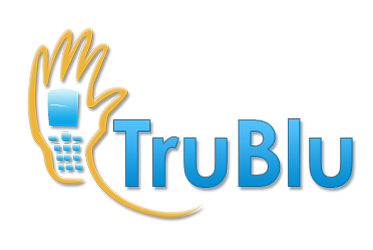Small businesses often struggle with creating effective content for their websites. With limited resources and time, it can be challenging to develop a content strategy that resonates with their target audience and drives traffic to their site. However, content creation is a crucial aspect of digital marketing that can make or break a small business’s online presence.
A well-crafted content strategy can help small businesses establish their brand voice, showcase their expertise, and engage their audience. It involves identifying the target audience, understanding their pain points, and creating content that addresses their needs and interests. By providing valuable and informative content, small businesses can build trust and credibility with their audience, which can ultimately lead to increased conversions and sales. In this article, we will explore the importance of content strategy and creation for small business websites and provide tips on how to develop an effective content plan.
Table of Contents
ToggleUnderstanding Content Strategy
As a small business owner, you may have heard the term “content strategy” thrown around, but what does it actually mean? In simple terms, content strategy is the planning, development, and management of content that aligns with your business goals and engages your target audience. A well-crafted content strategy can help your small business stand out in a crowded online marketplace and attract new customers.
Importance of Content Strategy
Having a content strategy is crucial for small business websites for several reasons. First, it helps you define your brand voice and messaging, which can increase brand recognition and loyalty among your target audience. Second, it can help you create content that resonates with your audience and meets their needs, which can lead to increased engagement and conversions. Finally, a content strategy can help you stay organized and consistent in your content creation, which can save you time and resources in the long run.
Elements of Content Strategy
A successful content strategy involves several key elements, including:
- Audience research: Understanding your target audience’s needs, preferences, and pain points is essential for creating content that resonates with them.
- Content planning: Developing a content calendar and identifying topics, formats, and channels for your content can help you stay organized and consistent.
- Content creation: Producing high-quality, engaging content that aligns with your brand voice and messaging is key to attracting and retaining your target audience.
- Content distribution: Promoting your content through social media, email marketing, and other channels can help you reach a wider audience and drive traffic to your website.
- Content analysis: Measuring the success of your content through metrics such as engagement, conversions, and traffic can help you refine your content strategy over time.
By incorporating these elements into your content strategy, you can create a cohesive, effective content plan that helps your small business achieve its goals.
Content Creation for Small Businesses
Creating content for a small business website can be challenging, especially if you are new to content creation. However, with the right strategy and approach, you can create engaging content that resonates with your target audience and drives traffic to your website. Here are some tips for creating content for small business websites.
Identifying Your Audience
Before you start creating content, it is essential to identify your target audience. Who are your customers? What are their pain points? What kind of content do they like to consume? By answering these questions, you can create content that speaks directly to your audience and addresses their needs.
Creating Engaging Content
Once you have identified your target audience, you can start creating content that engages them. Here are some tips for creating engaging content:
- Use a conversational tone of voice
- Write attention-grabbing headlines
- Use images and videos to break up text
- Tell stories that resonate with your audience
- Use humor when appropriate
By creating engaging content, you can keep your audience interested and coming back for more.
Utilizing SEO in Content
Search engine optimization (SEO) is essential for small business websites. By optimizing your content for search engines, you can improve your website’s visibility and attract more traffic. Here are some tips for utilizing SEO in your content:
- Use relevant keywords in your content
- Use meta descriptions and title tags
- Use internal and external links
- Use header tags to structure your content
By utilizing SEO in your content, you can improve your website’s search engine rankings and attract more traffic.
In conclusion, creating content for small business websites can be challenging, but by identifying your audience, creating engaging content, and utilizing SEO, you can create content that resonates with your audience and drives traffic to your website.
Content Management
As a small business owner, managing your website’s content can be a daunting task. However, with the right strategy and tools, you can easily streamline the process and ensure that your website’s content is always up-to-date and relevant.
Content Scheduling
One of the best ways to manage your website’s content is by creating a content schedule. This schedule will help you plan out your content in advance, ensuring that you always have fresh and engaging content for your audience.
To create a content schedule, start by identifying the topics and themes that are most relevant to your business. Then, set a publishing schedule for each piece of content, taking into account factors like seasonality, industry trends, and your audience’s interests.
You can use a content calendar tool to help you manage your schedule and ensure that your content is published on time. Some popular content calendar tools include Trello, Asana, and CoSchedule.
Content Updating
In addition to scheduling new content, it’s important to regularly update your existing content to keep it fresh and relevant. This can include updating product pages, blog posts, and other website content.
To ensure that your content stays up-to-date, create a content audit schedule. This schedule should outline when each piece of content will be reviewed and updated.
During the content audit, you should review each piece of content for accuracy, relevance, and engagement. Use tools like Google Analytics to track engagement metrics and identify which pieces of content need updating.
By regularly scheduling content updates, you can ensure that your website’s content remains relevant and engaging for your audience.
Overall, content management is a critical component of any small business website strategy. By creating a content schedule and regularly updating your content, you can ensure that your website remains a valuable resource for your audience.
Monitoring and Measuring Success
As a small business owner, you need to know how your content is performing and whether it’s helping to achieve your goals. Monitoring and measuring success is crucial to ensure that your content strategy is on track and to make adjustments when necessary.
Content Performance Metrics
To measure the success of your content, you need to track specific metrics. Here are a few key metrics to consider:
- Traffic: The number of visitors to your website is a critical metric to track. It shows how well your content is attracting people to your site.
- Engagement: Engagement metrics, such as time spent on page, bounce rate, and social shares, indicate how well your content resonates with your audience.
- Conversion: Conversion metrics, such as leads generated, sales made, and email sign-ups, show how well your content is converting visitors into customers.
By tracking these metrics, you can identify which pieces of content are performing well and which ones need improvement.
Analyzing and Adjusting Strategy
Once you have collected data on your content performance metrics, it’s time to analyze the results and make adjustments to your content strategy. Here are a few things to consider:
- Identify top-performing content: Look for patterns in the data to identify which types of content are resonating with your audience. Use this information to create more content that is similar in style or topic.
- Adjust content promotion: If you find that your content is not getting enough traffic, consider adjusting your promotion strategy. You may need to spend more time promoting your content on social media or through email marketing campaigns.
- Experiment with new formats: If your content is not getting enough engagement, try experimenting with new formats, such as video or interactive content. You may find that your audience responds better to these formats.
By analyzing your data and making adjustments to your content strategy, you can ensure that your content is performing well and helping you achieve your business goals.
Conclusion
Creating a content strategy for your small business website is an essential step towards building a strong online presence. By defining your goals, understanding your audience, and creating valuable content, you can attract and retain customers while establishing your brand as an industry expert.
Remember to keep your content consistent, relevant, and engaging. Use a mix of formats, such as blog posts, videos, infographics, and social media posts, to appeal to different types of users. Don’t forget to measure your content’s success by tracking metrics like website traffic, engagement rates, and conversion rates.
By following these tips and investing time and effort into your content strategy, you can build a loyal customer base and grow your business online. Good luck!
Frequently Asked Questions
How can small businesses use content to increase brand awareness?
Small businesses can use content to increase brand awareness by creating unique and engaging content that resonates with their target audience. This can include blog posts, social media updates, videos, infographics, and more. By consistently producing high-quality content, small businesses can establish themselves as thought leaders in their industry and build a loyal following of customers and fans.
What are some effective ways to generate leads through content for small business websites?
One effective way to generate leads through content for small business websites is by creating lead magnets such as ebooks, whitepapers, or webinars that offer valuable information in exchange for contact information. Small businesses can also use content marketing tactics such as email marketing and social media advertising to drive traffic to their website and capture leads.
How can content help build loyalty among small business customers?
Content can help build loyalty among small business customers by providing them with valuable information, entertainment, or inspiration that they can’t find elsewhere. By consistently delivering content that meets their needs and interests, small businesses can establish themselves as trusted sources of information and build strong relationships with their customers.
What are some conversion marketing strategies that small businesses can implement through content?
Small businesses can implement conversion marketing strategies through content by creating compelling calls-to-action (CTAs) that encourage visitors to take action, such as signing up for a newsletter, downloading a free resource, or making a purchase. They can also use retargeting ads and personalized content to reach visitors who have already interacted with their website and are more likely to convert.
What are some creative content ideas for small businesses to engage with their audience?
Small businesses can engage with their audience by creating content that is informative, entertaining, or inspiring. This can include blog posts, videos, infographics, social media updates, podcasts, and more. They can also encourage user-generated content by asking their audience to share their experiences, opinions, or ideas.
What are the key steps to creating a successful content strategy for a small business website?
The key steps to creating a successful content strategy for a small business website include defining your target audience, setting clear goals and objectives, conducting keyword research, creating a content calendar, developing a distribution plan, measuring and analyzing your results, and continuously optimizing your strategy based on what works best for your business.




